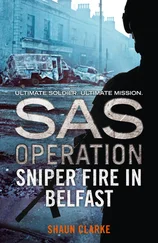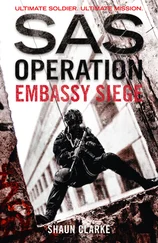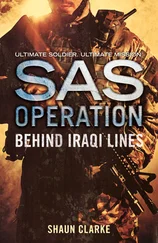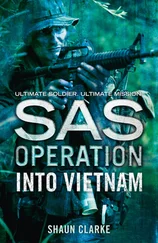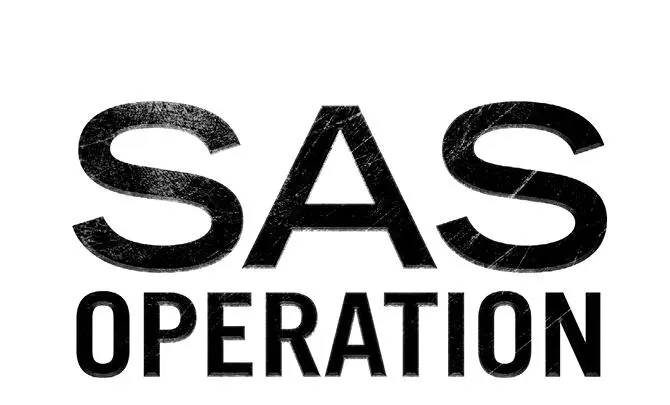
SHAUN CLARKE

Published by HarperCollins Publishers Ltd
1 London Bridge Street
London SE1 9GF
www.harpercollins.co.uk
First published in Great Britain by 22 Books/Bloomsbury Publishing plc 1994
Copyright © Bloomsbury Publishing plc 1994
Cover layout design © HarperCollins Publishers Ltd 2015
Cover photographs © Collaboration JS / Arcangel Images (soldier); Shutterstock.com (aeroplane)
Shaun Clarke asserts the moral right to be identified as the author of this work.
A catalogue copy of this book is available from the British Library.
This novel is entirely a work of fiction. The names, characters and incidents portrayed in it are the work of the author’s imagination. Any resemblance to actual persons, living or dead, events or localities is entirely coincidental.
All rights reserved under International and Pan-American Copyright Conventions. By payment of the required fees, you have been granted the non-exclusive, non-transferable right to access and read the text of this e-book on screen. No part of this text may be reproduced, transmitted, down-loaded, decompiled, reverse engineered, or stored in or introduced into any information storage and retrieval system, in any form or by any means, whether electronic or mechanical, now known or hereinafter invented, without the express written permission of HarperCollins.
Source ISBN: 9780008155247
Ebook Edition © December 2015 ISBN: 9780008155254
Version: 2015-11-12
Contents
Cover
Title Page
Copyright Published by HarperCollins Publishers Ltd 1 London Bridge Street London SE1 9GF www.harpercollins.co.uk First published in Great Britain by 22 Books/Bloomsbury Publishing plc 1994 Copyright © Bloomsbury Publishing plc 1994 Cover layout design © HarperCollins Publishers Ltd 2015 Cover photographs © Collaboration JS / Arcangel Images (soldier); Shutterstock.com (aeroplane) Shaun Clarke asserts the moral right to be identified as the author of this work. A catalogue copy of this book is available from the British Library. This novel is entirely a work of fiction. The names, characters and incidents portrayed in it are the work of the author’s imagination. Any resemblance to actual persons, living or dead, events or localities is entirely coincidental. All rights reserved under International and Pan-American Copyright Conventions. By payment of the required fees, you have been granted the non-exclusive, non-transferable right to access and read the text of this e-book on screen. No part of this text may be reproduced, transmitted, down-loaded, decompiled, reverse engineered, or stored in or introduced into any information storage and retrieval system, in any form or by any means, whether electronic or mechanical, now known or hereinafter invented, without the express written permission of HarperCollins. Source ISBN: 9780008155247 Ebook Edition © December 2015 ISBN: 9780008155254 Version: 2015-11-12
Prelude
Chapter 1
Chapter 2
Chapter 3
Chapter 4
Chapter 5
Chapter 6
Chapter 7
Chapter 8
Chapter 9
Chapter 10
Chapter 11
Chapter 12
Chapter 13
Chapter 14
Chapter 15
Chapter 16
OTHER TITLES IN THE SAS OPERATION SERIES
About the Publisher
Operation Overlord, the Allied invasion of Europe, commenced on the night of 5 June 1944 with the concentrated bombing of German positions on the north coast of France by 750 heavy bombers, an onslaught against the Normandy defence batteries by hundreds of medium bombers, the clearing of broad sea highways thirty miles long by 309 British, 22 American and 16 Canadian minesweepers, and landings by parachute and glider in the vicinity of the east bank of the Caen canal and astride the Cherbourg peninsula. Fires were already burning all along the coast of Normandy, acting as beacons to the invasion fleet, when, just as dawn broke on D-Day, 6 June, Fortresses and Liberators of the US 8th and 9th Air Forces, covered by an umbrella of fighters, dropped 2400 tons of bombs on the British beaches and nearly 2000 tons on the American beaches.
Shortly after dawn, the warships heading for Normandy opened fire with their big guns, covering the coastline with spectacular flashes and clouds of brownish cordite while the British ‘Hunt’-class destroyers raced in to engage the enemy’s shore batteries. To the west, American destroyers were doing the same, with the heavier guns of their battleships hurling fourteen, fifteen and sixteen-inch shells on to the beaches and the German fortifications beyond them. The final ‘softening up’ was achieved by rocket-firing boats which disappeared momentarily behind sheets of flame as their deadly payload rained down on the beaches, adding to the general bedlam by causing more mighty explosions, which threw up mushrooms of flying soil and swirling smoke.
At 0630 hours American forces swarmed on to the western shores, where a broad bay sweeps round to Cherbourg. They were followed fifty minutes later by British and Canadian troops, put ashore by more than 5000 landing-craft and ‘Rhino’ ferries on the eastern beaches. Many of the assault craft were caught by sunken angle-irons and, with their bottoms ripped open, foundered before they made the shore; others were blown up by mines.
Nevertheless the men, each heavily burdened with steel helmet, pack and roll, two barracks bags, rations, two cans of water, gas mask, rifle and bayonet, bandoliers of ammunition, hand-grenades and, in many cases, parts of heavy weapons such as machine-guns and mortars – a total weight never less than 132lb – continued to pour ashore on both the eastern and western fronts, advancing into the murderous rifle and machine-gun fire of the Germans still holed up in their concrete bunkers overlooking the beaches. Likewise savaged by a hail of enemy gunfire were the Royal Engineers and American sappers, who continued bravely to explode buried German mines to create ‘safe’ paths for the advancing Allied troops.
Within minutes, the beaches, obscured in a pall of smoke, were littered with dead bodies and black shell holes. The sounds of machine-guns and mortars increased the already appalling din. Out at sea, the guns of Allied cruisers, battleships and destroyers continued a bombardment that would account for 56,769 shells of various calibres. Simultaneously, the Air Force continued to pound the enemy positions: more than 1300 Liberators and Fortresses, escorted by fighters, bombed the German positions for another two and a half hours.
By evening the Germans overlooking the beach had been pushed well back and Allied forces were as far as six to eight miles inland. While British Commandos and American Rangers were having spectacular successes on their separate fronts, a Royal Marine Commando, even after the loss of five of its fourteen landing-craft, fought through Les Roquettes and La Rosière, quelled several German machine-gun and mortar nests, and finally captured Port-en-Bessin. There, making contact with the Americans, it linked up the whole Allied front in Normandy and paved the way for the major push through France.
Strategically vital bridges, locks and canals soon fell to the Allies and in many small towns and villages French men and women emerged from rubble and clouds of dust to wave the tricolour and rapturously greet their liberators.
Читать дальше






